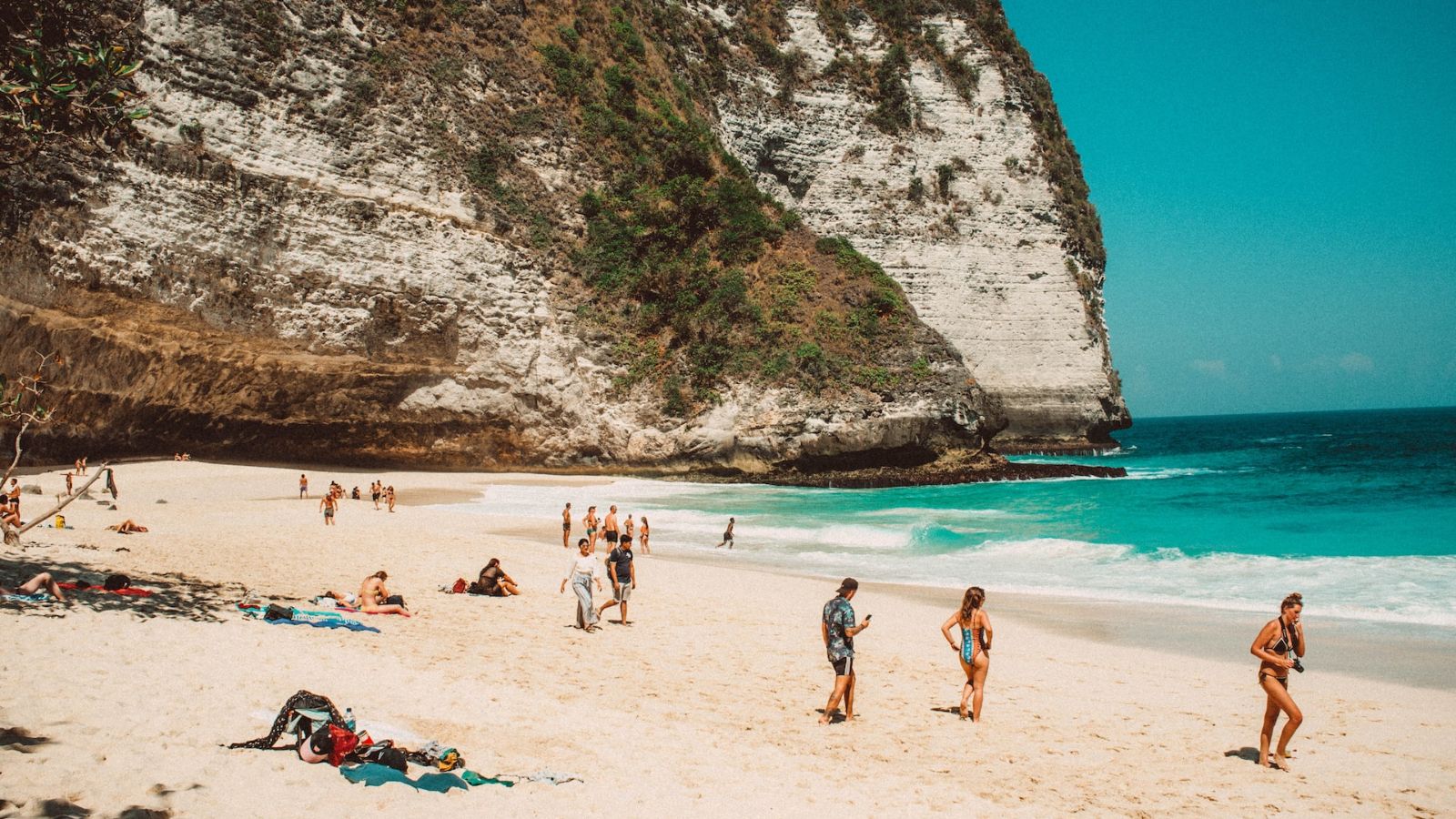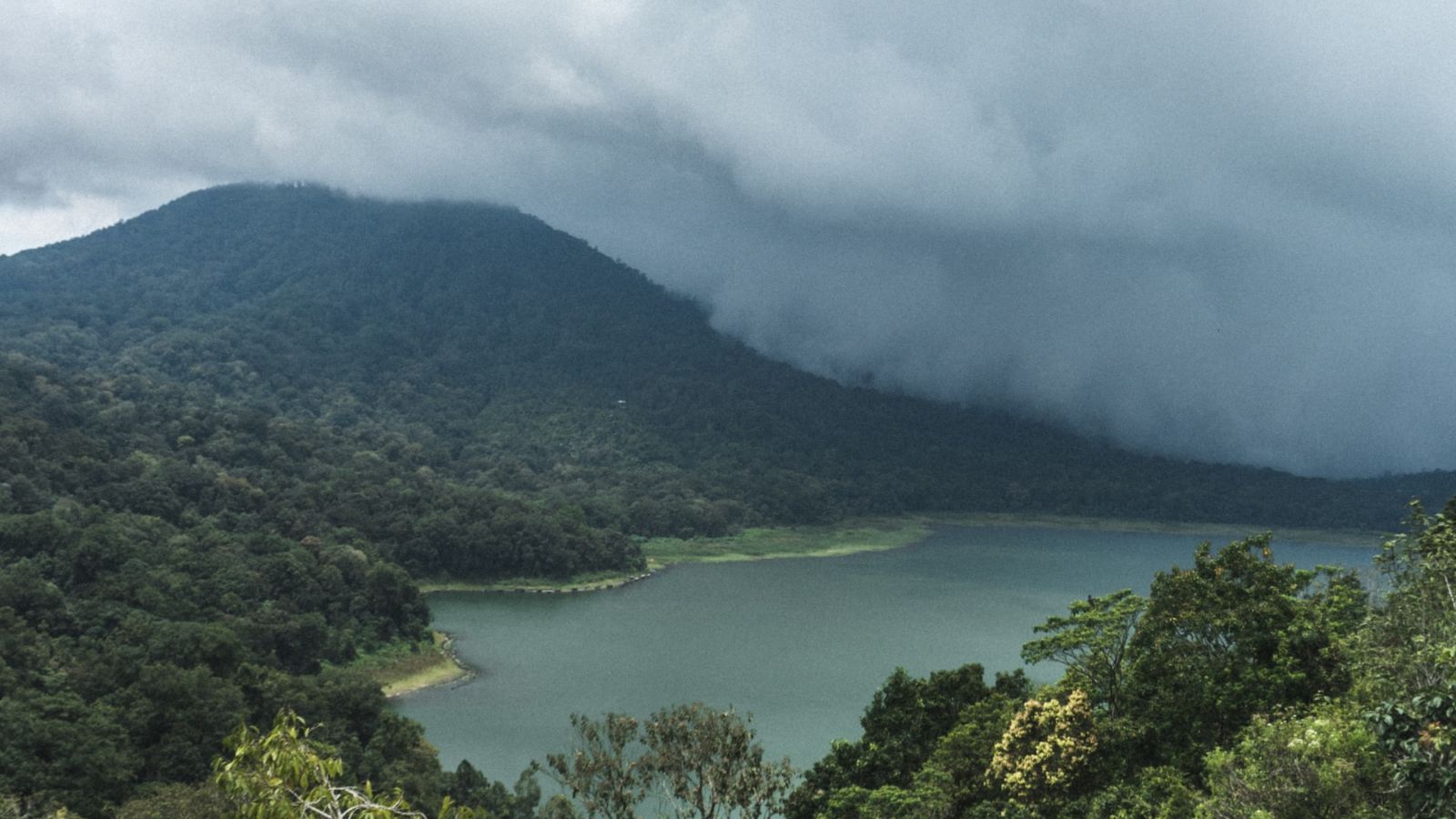A Bali holiday is great at any time of year. No matter when you visit, you’ll experience local hospitality, exceptional views and deep-rooted culture and traditions.
However, the weather in Bali can have an impact on prices, availability of accommodation and what activities you can do during your trip. So the best time to visit Bali depends on your budget and interests.
You can fly to Bali for less throughout the year by using Qantas Points or Velocity Points. For example, fly direct from Australia’s east coast in Qantas Economy from just 20,300 points – plus fees and taxes.
So don’t pack your umbrella or sun hat just yet. Read on to learn more about Bali’s weather and when you should visit for cheap prices, outdoor activities and the best entertainment.
What is the weather like in Bali?
Bali is located just south of the equator and has a warm, tropical climate throughout the year. As the island is small, Bali’s weather doesn’t differ much across its areas. The temperature is steady year-round, so you won’t experience the fluctuations of four seasons. Rather, Bali has two distinct seasons: wet season and dry season.
When is Bali’s wet season?
Wet season in Bali occurs between November and March, with peak rainfall occurring in January. Rain can last for several hours, or even continue for many days. Despite consistent temperatures across the year, Bali’s rainy season brings added humidity and the possibility of thunderstorms and flooding. Travel insurance is especially useful if you’re visiting Bali at this time, as the wet weather can affect your travel plans.
When is Bali’s dry season?
Dry season in Bali occurs between April and October. Rainfall is minimal and the island experiences mostly long, sunny days. The temperature doesn’t drop much at night during the dry season, so it’s a popular time of year to visit Bali. But the favourable weather can come with a hefty price tag, with many service providers increasing their prices during peak tourist periods.

Bali weather by month
Wondering which month is best to visit Bali? The weather can have an impact on your travel plans, so it’s important to know what to expect during your Bali trip. We break down the weather in Bali by month so you can plan your dream getaway.
Bali weather in January
January is the rainiest month in Bali, so you can expect most of your trip to be filled with tropical showers. On average, there are only 3-4 days without any rainfall. Travelling to Bali in January is a great excuse to explore the island’s natural attractions and venture away from the beaches. Higher regions, such as Kintamani and Mt Batur, experience temperatures between 10°C and 15°C at night.
After a busy festive period, accommodation prices in Bali drop significantly in January. It’s an ideal time to explore the island’s art markets, shops and restaurants. And because temples and popular tourist attractions are relatively empty, you’ll get the perfect photo opportunity if you’re willing to brave the rain.
Bali weather in February
The wet season in Bali continues into February. While there is slightly less rain compared to January, Bali’s weather in February is still unpredictable. It’s possible to spend some time at the beach, but a downpour can occur at any time of day. Rough seas are common, particularly in the areas of Canggu, Seminyak and Kuta. While this is great for some activities like paragliding or surfing, it’s not ideal weather for snorkelling or diving.
Bali weather in March
Bali’s rainy season begins to wind down in March. Afternoon showers are still possible, but the weather is far drier and more humid. The wind along the coast subsides, which may allow you to enjoy watersports. Tourists that are eager to avoid peak season start returning and accommodation in Bali remains affordable at this time.
Nyepi, the celebration of Balinese New Year, is often observed in March. Locals honour this occasion with a day of silence, fasting and meditation. The island shuts down for 24 hours and everyone – including tourists – is encouraged to stay indoors. No movement is allowed, and flights and boats in and out of Bali are suspended. The night before Nyepi is filled with festivities and a parade, and visitors travelling to Bali in March can enjoy this unique spectacle.
Bali weather in April
The sun is back, with April marking the start of Bali’s dry season. Rain can still occur, but with a third of the rainfall of March, April is one of the best times to visit Bali. The beaches are almost completely cleared after the wild weather of the wet season, and less wind makes it ideal for relaxing with a cocktail. Hotels begin to fill up slowly and can become particularly crowded during the Easter period. Bali’s weather in April provides greater visibility along the coast, with conditions ideal for diving or snorkelling.

Bali weather in May
If you’re looking for fresh mornings and balmy evenings, Bali’s weather in May will delight. Calm oceans and clean beaches make it one of the best times of year to visit Bali. May is also Bali’s hottest month, with temperatures averaging 29°C.
Some of the most popular things to do in Bali during May are diving and mountain climbing. Consistent, dry weather makes for ideal conditions, and there are fewer tourists on the island compared to June. Plus, as it’s still shoulder season, Bali hotel prices are relatively low.
Bali weather in June
June marks the start of Bali’s high season. Much like May, it’s one of the best times of the year to visit Bali. Expect plenty of sunshine and less humidity, with an average temperature of 27°C. Visitors aren’t out in full force yet, so there are still plenty of affordable accommodation options. Restaurants and activities aren’t fully booked so it’s easy to secure a reservation. Travelling to Bali in June also means you’ll avoid the busy Australian school holiday period, and flights are generally cheaper.
Bali weather in July
Bali’s dry season reaches its peak in July. With an average of only four days of rain and temperatures hovering around 26°C, it’s one of the most popular times to visit Bali.
The weather in Bali in July sets the tone for beach parties, clubbing and festivals. Tourists flock to the island to attend various weekly events. Resorts in Kuta, Seminyak and Sanur fill up quickly. And, as school holidays in Australia fall in July, there are plenty of Aussie families looking to escape the cold.
If you’re travelling to Bali in July, book early. Hotels not only book out fast, but prices are at their highest. While some tours and activities run more frequently during peak season, booking early can ensure you get the dates and times you need.
Bali weather in August
The weather in Bali in August is similar to July. However, it’s also the sunniest month of the year, with a daily average of 10 hours of sunshine. Plus, with temperatures around 27°C, August in Bali brings perfect conditions to spend your days at the beach.
However, almost everyone on the island has the same idea, and beaches in the south can become crowded. Kuta, Canggu, Seminyak and Nusa Dua are bustling with tourists, with accommodation priced accordingly. Expect hotel, resort and villa prices to be similar to the Christmas period.
August is an ideal time to visit Bali to take advantage of various events and activities happening across the island. And unlike other months, temperatures don’t drop as much at night, so you can explore Bali’s nightlife to your heart’s content.

Bali weather in September
September in Bali is the final month of dry season. Temperatures average around 27°C, and you can expect clear skies and plenty of sun. Tourist numbers begin to dwindle, making it one of the best times to visit Bali to avoid crowds. You can expect showers towards the end of the month, which is a welcome change from the dryness. It’s a pleasant time to visit Bali, and outdoor activities like hiking, rafting and surfing can be enjoyed without the tourists.
Bali weather in October
Wet season in Bali starts in October. In contrast to previous months, the island is far quieter. Almost half of the days will experience some rain, but the temperature remains warm.
If you’re travelling to Bali in October, you may be able to catch some international events before they wrap up. Writers from around the globe make the journey to the Ubud Writers and Readers Festival, a multi-day event held annually in October. Some beach resorts host DJs and club nights before the wet season fully kicks in. And if you’re attending a wellness retreat, Bali’s weather in October allows you to comfortably practice yoga or meditation without the dry heat.
Bali weather in November
When you travel to Bali in November, the pace is noticeably slower. While some sunny days can still be enjoyed, it’s evident that Bali’s wet season has well and truly begun. Many popular trekking and hiking trails are closed, but that doesn’t mean there aren’t any activities on offer. Embrace the laid-back vibes with a visit to one of Bali’s many coffee shops and curl up with your favourite book. Pamper yourself with a massage or spa treatment. And if you want a taste of the culture without venturing outdoors, there are plenty of museums, workshops and cooking classes to enjoy.
November is one of the best times to visit Bali if you’re on a budget. Accommodation prices are at their absolute lowest, and you’ll find great offers throughout restaurants and shops. Many water sports activities are still operating – weather permitting – so it’s a good opportunity to nab a deal.
Bali weather in December
After a bit of a lull, things start to pick up again in Bali during December. Tourists looking to spend Christmas in Bali can expect heavy rainfall, especially if the previous month was relatively dry. It’s possible to squeeze in a few days on the beach, but with an average of 22 days of rain, careful planning may be required. Wind and rough seas mean that many water sports are off the cards, and the southern coastline is often lined with rubbish that has blown in from the sea.
Despite December’s wet weather in Bali, there’s plenty of entertainment in the lead-up to Christmas and New Year. Beach clubs host events with international acts, while restaurants offer a range of celebration packages. With families travelling to Bali during the school holidays, many hotels and resorts provide programs and activities for children. Although accommodation and flight prices are at their peak, December is a vibrant time of year to visit Bali.

So when is the best time to visit Bali?
Bali is stunning throughout the year, with plenty on offer to satisfy every traveller. The best month to visit Bali comes down to personal preference. There are benefits of travelling during the rainy season to avoid crowds, take advantage of cheap accommodation and enjoy many indoor activities. Likewise, those looking for a bustling atmosphere, international events and sunny weather will enjoy travelling to Bali during the dry season. Regardless of when you plan to travel to Bali, you’re sure to have an amazing experience.
Fly to Bali from Australia
Dreaming of a Bali holiday? Qantas, Jetstar and Virgin offer direct routes from most Australian cities, including Sydney, Melbourne, Brisbane, Adelaide, Perth and Darwin.
And by signing up for the Qantas Frequent Flyer program or Velocity Frequent Flyer program, you could be jetting there sooner than you think.
Looking for more tips on travelling to Bali from Australia? Explore all of our guides and get started on planning your Bali getaway.







Community